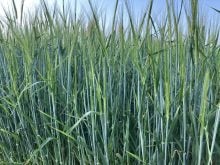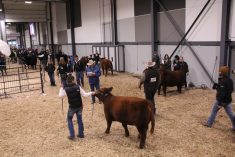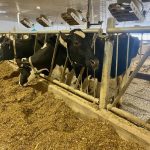When any market gets insanely high, regardless of the commodity — cattle, canola or Bitcoin — it only takes a light whisper on the wind of something negative to get a knee-jerk reaction.
The Achilles’ heel of this market is some sort of apocalypse, and everyone is on the lookout for what it could possibly be.
Read Also

Finding greater value through controlled creep feeding of beef calves
Gerard Roney, founder of Advantage Feeders in Australia, spoke at Ag in Motion 2025 about using controlled creep feeding to develop a calf’s rumen, allowing for better uptake of energy and protein at a younger age, along with other beneficial applications of creep feeding.
Record shortages of cattle, grain prices leaning in the cattle feeder’s direction and demand for trim at all-time highs are all in our favour.
On the flip side, drought, mediocre fat prices and a backlog of market-ready cattle are not in our favour. Ships running into bridges were not on my 2024 bingo card, but that hasn’t affected the market, in my opinion.
An outbreak of avian flu in cattle in Kansas and Texas, and a single goat in Minnesota (a couple hours south of Fargo, North Dakota) has people paying attention. The amount of money that is out on cattle for grass and in feedlots, is at an all-time high. This market seems to look higher every week, and people are on the lookout for what might dull its edge.
On Saturday, March 23, we marketed 3,120 cattle in Virden, Man., to a wild and robust market. Buyers from across the country came to buy, but I felt a slight undertow of resistance. Come Monday, it was a completely different story, as the futures board made everyone look at the avian flu cases and reminded us that when something gets so high, it becomes like a minefield.
Most feedlots are quite full. The early selloff of feeders due to the extremely strong market, coupled with a sluggish fat cattle trade, has made for a bit of a pen space issue in spots. Several larger orders started pulling in the reins, wanting to see how this all played out.
This past week more news of avian influenza has taken some additional money off the futures board, and although it did come back somewhat later in the week, the board is still considerably lower than the previous week. As one of my “heavy hitters” in the front row mentioned to me this week, even if we don’t like it, the Board (Chicago Mercantile Exchange) still needs to be respected. All the commodity feeders are paying attention this week and pulled some money off to be careful.
The 600-pound steers and the 800-pound breeding-quality heifers sold exceptionally well this week, with several of us fighting for them. But, the rest of the cattle I would call $5-$10 lower. On the second cut heifers, especially cattle carrying some flesh, $10-$20 lower.
Is this a little bump in the road or a correction in the market?

The information above is the sole opinion of Brennin Jack, manager of Heartland Livestock Services in Virden, Man.
















